If you’re wondering how to choose a bass amp, or wondering what style, type or size of bass amp you need, I’ve got you covered in this complete bass guitar amp buying guide for beginners and those who just need a refresher when choosing a new bass guitar amplifier.
Your bass amp is one-third of your bass tone. The other parts being your bass and the way you play it. So choosing the best bass amp for YOUR style and sound is pretty important, to say the least. This doesn’t mean you can buy the WRONG bass amp, because as musicians we often buy multiple pieces of equipment and amps to provide different sonic problems. For example, you might want a small 15 watt bass amp for practice, and then a monster 500-watt head for the festivals you’re playing. No bass guitar amp buying guide would be accurate if it told you to buy one style of bass amp ONLY. It’s important to know that you can have multiple bass amps for different scenarios.
But what bass amp should you choose? A combo amp or stack with bass cab and bass amp head? A tube/valve bass amp or solid-state amp? Hybrid amp or pedalboard bass amp (yep we make them in the form of the Laney Digbeth DB-PRE Bass preamp pedal)? There’s so much to choose from, and of course, we believe that here at Laney, our team designs and makes some of the best bass amps in the world, but there’s good reason for that: Bass is part of the Laney DNA. Founded in 1967 by Lyndon Laney, a bass player, the business was born with a bass in its hand.
So let’s dig in and talk about what the best bass amp for your needs might be!

TL;DR:
In this bass guitar amp buying guide i’ll aim to:
There are 4 main types of bass amps: solid-state, tube amps, hybrid amps and bass amp modelers. Then there are 3 main types of bass amp setups: combo amps, head and stack, and then pedalboard amps otherwise known as direct input bass amps. Each with their own pros, cons and benefits. All of which are great choices, and there’s no right or wrong answer when choosing one. But there are a few different features you might be interested in which we’ll get into.
Bass guitars need special amps, or “bass specific” amps as a guitar amp won’t cut it for a bass guitar. Bass guitars generate lower frequencies compared to regular guitars, and they need special amps to handle these low frequencies effectively. These lower frequencies, typically ranging from about 40 to 400 Hertz for a standard 4-string bass, demand robust power handling and speaker design to reproduce the sound accurately. A guitar amp might not deliver the desired sound quality or could even get damaged when used with a bass guitar due to the heavy demands of the low frequencies. Basically, if you plug a bass into a guitar amp, it won’t sound right.
The difference between solid-state and tube bass amps comes down to the components used: solid-state amps use transistors and tube amps use glass vacuum tubes to get their sound. Tube bass amps distort at a frequency that is pleasing to the ear at high volumes and solid-state amps do not. You often get more headroom (clean tones at high volume) with solid-state amps where a tube amp will start to distort the more you push it or increase the volume. However, don’t worry too much as all Laney solid-state bass amps are built with enough headroom so you won’t get that unwanted clipping or distortion, with additional features to drive the amp or introduce built-in distortion so you still get deep, reliable bass tones with the ability to add crunch when you need it.
We’ve covered the difference between solid-state and tube guitar amps, but when it comes to bass, the answer is the same – you don’t have to choose as both are fine and have their place!
In terms of functionality, if you’re a beginner a high-power solid-state bass amp will do everything you need it to. However, if you want that “vintage” sound or musically pleasing distortion, a tube amp or hybrid amp such as the Laney Digbeth bass amp series might be your best choice as a hybrid bass amp will fuse the two technologies together giving you the best of both worlds. However, it’s worth noting that tube amps are more expensive than solid-state due to the transformers and tubes used. The tubes, which are made of glass are also quite fragile, so transporting the tube amp is a little trickier than a solid-state bass amplifier – you just have to be a little more careful. Tube amps are also a lot heavier than a solid-state bass amplifier.
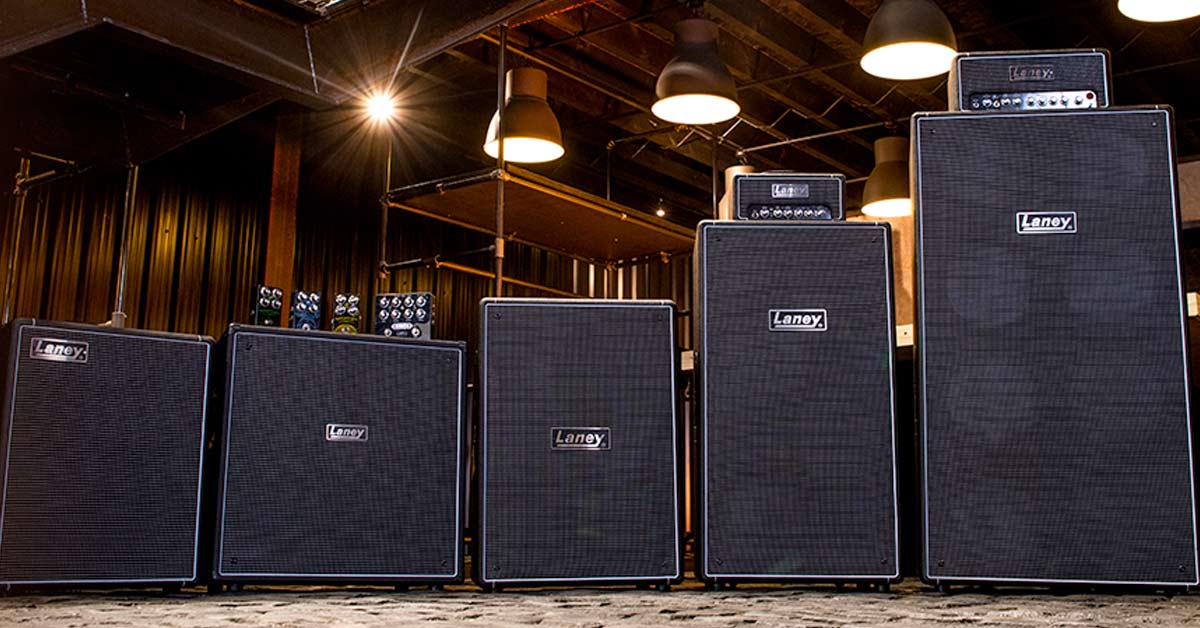
The Laney Digbeth Bass Amplification range fuses tube amp and solid state technology – not quite hybrid bass amp, not quite modeling, but the best of all worlds.
A growing number of bass players love using solid-state bass guitar amps due to their reliability and affordability. They’re easier gigging amps to travel with as they’re lighter and you don’t really have to maintain them as there are no tubes to replace. Again, these types of amps utilise transistors in their preamp and power amp sections, and they are known for their clean, clear sound which makes them perfect for jazz musicians and those who want more of a pedal platform or cleaner-sounding bass rig at higher volumes or the ability to drive distortion at lower volumes.
However, solid-state amps are sometimes known for lacking the “warmth” that some musicians prefer in their bass tone. Fortunately, with the likes of our Laney Richter series bass amps, we’ve introduced a wide array of EQ settings and built-in gain stages so you can actually sculpt your ideal bass tone within seconds and get a harmonically pleasing bass tone.
Solid-state bass amps way smaller and lighter than valve amps. They are almost always in the form of bass combo amp, so they’re quick to set up and make perfect practice amps as you can take them anywhere. They are very loud, with the likes of the Richter series coming in 165w, 65w, 30w and a 15-watt compact amp. Again, they’re somewhat more reliable as they don’t use fragile tubes. Sound-wise, you can get a much cleaner sound at louder volumes. If you want to see more practice bass amps, check out our best bass amps for practice comparison!
When it comes to the cons of solid-state bass amps in terms of playing live, gigging and recording, there aren’t many downsides that I can think of! But any bass amps buying advice blog you get will almost always say the main “downside “ is that the tone is different – but that’s not necessarily a bad thing. Some say that solid-state amps don’t have the warmth that tube amps have, but if you’re a predominantly clean-sounding bass player relying on more modern tones, then the natural overdrive capability of valve amps won’t be of much use to you.
Solid-state amps are probably the best bass amps for gigging bass players who need a lightweight gigging solution and beginners who are not particularly fussed about the overdriven tones that tube amps can get. If you’re mainly using a clean tone or using clean modulation, then a solid-state may be best for you. Often metal players or grunge players prefer the sound of solid-state as you can get instant distortion at lower volumes. But as always, try them out for yourself. If you wnat to gig with both tube and solids stae/FET technology, the Laney Digbeth bass amps are some of the best bass combo amps for gigging!
Tube bass Amps, alternatively known as valve amps outside the USA, are widely loved by bass guitarists and guitarists alike because of their warmer, more responsive sound. They respond accurately to how hard or soft you play and provide that lush distortion at higher volumes. Valve bass amps use vacuum tubes in their preamp and poweramp sections, which are responsible for that signature richness and dimension in tone. Rock and blues bassists, in particular, tend to feel that tube amps are the best bass amps for them as they provide that natural overdrive and vintage feel that “blooms” when they play them.
It’s worth noting though, Tube Amps can be fickle. They are heavier, more expensive, and require more maintenance than other amp types. The tubes themselves can (very) occasionally fail and need replacement – not something to really worry about, but worth knowing at least. It’s never happened to me before, but at least you know!
Tube amps are known for their full-bodied sound and pleasing harmonics when they start to distort or hit breakup, providing a really organic and responsive overdrive – the more you dig in, the more the amp distorts, but in a GOOD way. They really respond to the dynamics of your playing, meaning you’re less likely to to need an EQ pedal.
They’re a LOT heavier to carry than a solid-state amp, and tube bass amps will require semi-regular maintenance as you’ll have to replace the tubes at some point as, just like lightbulbs, they eventually start to die. Again, this is not really a big deal just like changing strings on a bass guitar, except you only have to do it once every couple of years.
If you really value dynamic response, natural compression, you want the amp to distort the harder you play it, and you prefer the sound of a vintage style bass amp from the likes of the 60s and 70s, then you’ll probably want a tube bass amp. If you’re a classic rock or blues player, you’ll probably gravitate towards a tube bass amp.
Hybrid bass Amps strike the balance between solid-state and tube technology, fusing a tube preamp and a solid-state power amp so you get best of both worlds – the warmth and response of of tube amps and the reliability of solid states.
In the bass world, they’re a great solution, and some of the best bass amps for touring and recording bass players as you get all the great features of both types of amps. We often heard that tone purists felt the solid-state power section on hybrid bass amps didn’t provide the same natural compression and dynamic response as an all-tube power amp. Fortunately, we’ve got the solution in the form of the Laney Digbeth bass amp series. Where we fused solid-state technology and Tube emulation to give you the sound and feel of tube amps but with reliability of a solid-state.
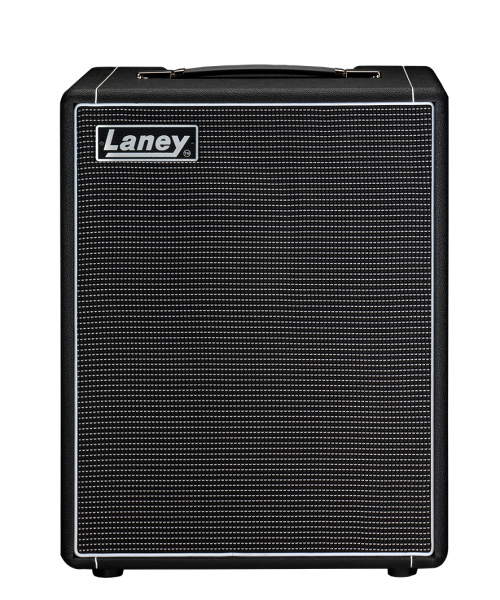
Pictured: The Laney Digbeth DB200-210 combo bass amp delivers 200 watts of power through 2×10 speakers!
Hybrid bass amps combine the reliability of solid-state power amps with the warm tonal qualities of tube preamps. You get the tonal sculpting features and dynamics of a tube, but the power and reliability of solid state.
Bass players who prefer the distinct characteristics of either solid-state or tube amps may not want to sacrifice tone or dynamic feel. But again, there are no real downsides or cons to hybrid amps. Amps like the Laney Digbeth bass amplification series do both sounds really well.
Modeling bass Amps use digital technology for amplification, and as a result, they are incredibly versatile. These amps basically emulate the sound of various other amp types (including the ones mentioned above), and usually include a wide range of effects. They basically have digital versions of OTHER amps built in. This makes them a popular choice for beginner bass players who might be experimenting with a bunch of different bass styles, tones and effects.
Our Laney Digbeth range is not quite a modeling amp, but features meticulously designed tube emulations, providing the grit, dynamic and weight of a tube amp sound and the ability to switch between FET and Tube emulations, so you get solid-state reliability, distortion at lower volumes but vintage tube dynamic and pleasing harmonics of a tube amp. Its everything you need and nothing you don’t.
Modeling Amps provide a wealth of sound options and effects built in, making them highly adaptable to any situation. They often include a bunch of different useful sounds that make sure you’re ready to play with any style of genre.
Some bass players feel that the digital emulations don’t capture the full range of tone and nuance of solid state or tube amps accurately – but fortunately we’ve made sure the Laney Digbeth range of bass amps provided the absolute industry standard solid state and tube amp tone. Our Laney artists rely on Laney to give them the best bass amp for any situation. Read 5 reasons why you’ll love the Laney Digbeth bass amps!
Direct input (DI) bass rigs, pedalboard bass rigs or ampless bass rigs allow you to connect your bass directly to a PA system or recording interface instead of mic’ing up the cab. This setup is particularly useful for small gigs or studio recording and you can get it by using a bass preamp such as the Laney DB-PRE for example. You essentially run a DI cable directly from your amp, or preamp to the PA system, bypassing the need to have an amplifier cabinet onstage at all.
The ‘direct out’ feature allows you to send your bass signal directly to the mixer or PA system bypassing the need for a dedicated microphone for your bass amp – you essentially go ampless on bass. It ensures a cleaner and more controlled sound by reducing stage clutter, feedback problems and you don’t ever have to worry about backline at a venue, as we all know bass players tend to share bass amps at gigs.
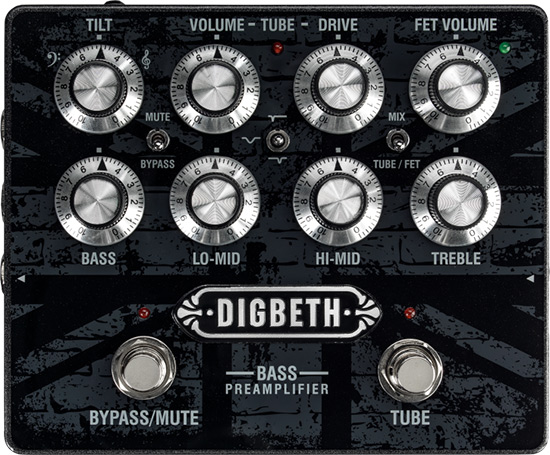
Pictured: The Laney Digbeth DB-PRE has all the features of the amp series packed into a floor based preamp – read 5 reasons why you need the Laney DB-PRE.
The ‘direct out’ feature on your pedalboard amp or bass preamp can be a life-saver for gigs. It’s especially beneficial when you’re playing at venues that may not have dedicated sound engineers as you can sculpt your own bass sound and play it through the PA system directly. This feature puts you in control of your sound while ensuring your bass is clearly heard, irrespective of the size or acoustics of the venue – you get the exact same bass sound anywhere.
We’ve discuss dampness bas rigs before, but essentially you can fit your amplifier on your pedalboard and travel to gigs with just a pedalboard and bass. Streamlining your setup and ensuring you get the exact same sound at every gig because you sculpt how YOU want it to sound directly on the pedal. We recommend the laney DBPre pbass preamp pedal, which is designed to give you the same sound as the laney Digbeth series bass amps, but in a pedalboard size package.
The only real downside to pedalboard or direct input bass rigs is that there’s no cab onstage. If there are no monitors, then you won’t be able to hear what you’re playing. Fortunately almost all venues you play will have stage monitors BUT they might be reserved fo the singer. Going straight into a DI at smaller gigs might be tricky as you’re potentially going to run into problems if there’s no monitor to hear ourself onstage. Just ring ahead to check.
Now that we’ve had a look at the different types of bass amps, it’s important to focus on some of the finer details.
For home practice, a bass amp with as low as 15 watts is perfect, especially in a smaller room where you don’t want to wake your neighbours. In the studio, an amp between 30, to 65 to 100+ watts provides enough headroom and power for clean recording without pushing the amp too hard. When you’re playing live, you’ll often need 100+ watts, giving the bass presence in a mix and ensuring your sound cuts through drums and guitars onstage.
I always recommend choosing a bass amp with a bit of overlap in wattage. For example, if you want to practice at home, and play small gigs, 30-200 watts allows for flexibility, readying you for gigs, rehearsals, and recording sessions with a single amp. If you ONLY want to play at home, 15-60w is fine.
The reason power ratings are higher is that it’s necessary to reproduce low frequencies at high volumes, ensuring that your bass cuts through the mix. That’s why you’ll get a bass amp with 500 watts, but a guitar amp topping out at around 100 watts.
Just like guitar amps, bass amps come in combo and stack forms. Combo amps combine the amplifier and speaker in one unit, keeping everything you need in one convening package. Stacks, on the other hand, are a combination of a bass amp head and an extension cabinet. They offer more flexibility, allowing you to mix and match different amp heads and speaker cabinets so you can either upgrade your wattage or mix different cab sounds with different amp sounds.
Combo bass amps offer great value, combining an amp and speaker into one, typically at a lower cost than if you were to buy the speaker and head separately. They’re convenient for home or studio use and manageable for gigs if the unit’s weight isn’t an issue. The only real downside is their bulkiness as larger bass combos might be overkill for small venues, and you can’t easily change the speaker. But if you want an all in-one package that you can turn up to gigs and play, a combo amp is the best bass amp for you. Almost all bass players start with combo bass amps like the Laney Richter series, then gravitate to head and cab when they get a bit more experienced and need more power. We also think the Laney Digbeth Bass Amps are some of the best bass combo amps for gigging too!
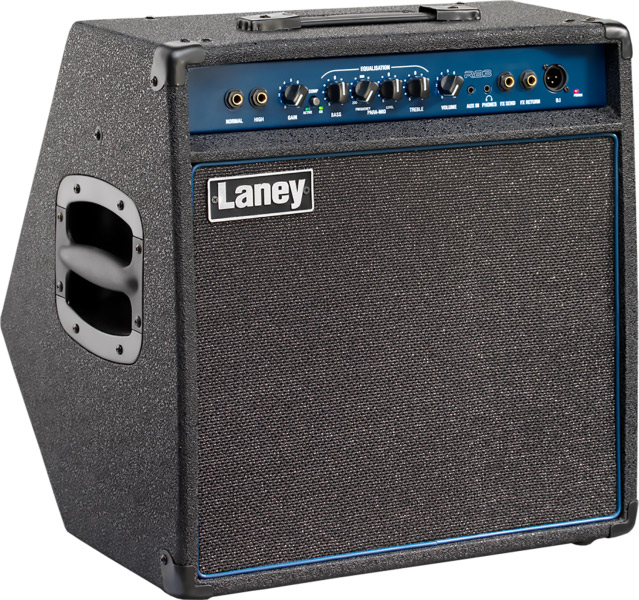
Pictured: The Laney Richter RB3 is a 65 Watts RMS solid-state kickback design bass combo, loaded with a custom 12″ driver & horn, providing more than enough for gigging musicians to play with.
Stacks, comprising a separate bass amp head and bass cabinet, provide more flexibility, usually more power (bass amplification) and are easier on your back as you literally separate the head from the cab. They’re ideal for frequent gigging, allowing you to swap out heads or cabs for different tones or venues and most pro bass players tend to go for a head and cab combo eventually. However, they do require more setup and an understanding of impedance matching and are generally more expensive than combos. But you’ll learn that head and cab amps like the Laney Digbeth series amplifiers are usually the best bass amps for pros and live musicians.
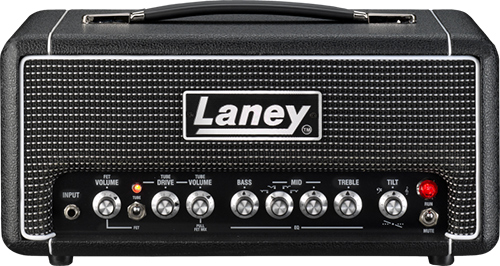
Pictured: The Laney DIGBETH DB500H amplifier head delivers 500 watts of power and has mixable FET and TUBE preamp sections.
When it comes to bass amplification, the size and number of speakers in your bass amp can significantly affect your sound. Large speakers like a 12” or 15” tend to produce a more weighty, rumbling bass, while smaller speakers like 8” or 10” offer a tighter, more precise sound with midrange frequencies that cuts through the mix more. The number of speakers also impacts the amp’s overall volume and tone.
This is why most pro-level bass amp setups use either a 2×12 bass cabinet or 4×10 bass cab. With the 2×12 you get more of a weighty bass sound from the 12” speakers, but not so much power to make the sound muddy. With a 4×10 cab you get the punchy sound, midrange response (where the detail of your sound is) but with 4 speakers providing the power and deep bass response, which effectively gives you the best of both worlds.
Again, carrying a 4×10 cab to venues or 2×12 might not be for you, especially if you’re playing smaller shows. So just think about travelling and stage space.
Just remember, the smaller the speaker the more treble and midrange you get, but you sacrifice volume and power. The larger the bass cab speaker the more bass and power you get. Just use a preamp pedal or the amp settings to even out the unwanted frequencies.
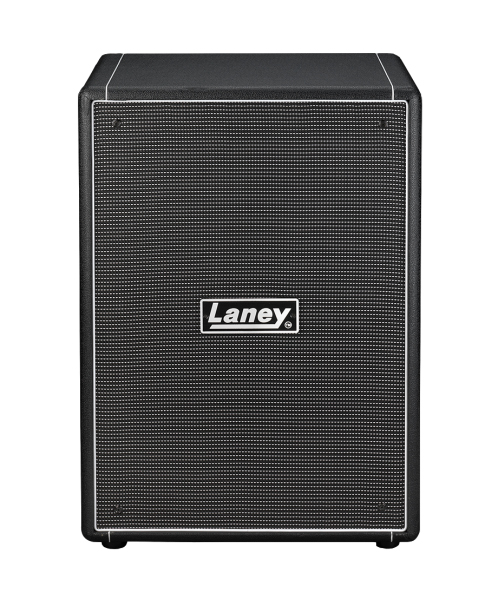
Pictured: The Laney DBV212-4 2×12 bass amp speaker cabinet features 2×12″ speakers designed to accentuate the impressive punch and tone of its ceramic drivers and move some serious air onstage.
So what size amp should I choose? Again, choosing the best bass amp depends on several factors, including your playing style, the venues you typically play at, and your budget. To make an informed decision, this is what I would tell you to do based on my experience as a touring musician.
Consider your playing style, the genres you play, and your performance venues. If you’re mainly playing small gigs or practicing at home, a combo amp or a small stack might be sufficient. For larger venues, consider a more powerful stack or a DI rig.
This largely depends on your personal preference. If you prefer a warm, natural overdrive sound, consider a tube amp. If you prioritise reliability and high volume, a solid-state amp might be a better choice. If you want the best of both worlds, then a hybrid amp might be best for you.
Again, this depends on your performance venues. For home pracice, 15-65 watts is fine. For small gigs, anything from 50-100 watts is best. For larger venues, consider an amp with a power output of 200-500 watts or more.
A good beginner bass amp is usually going to be a bass combo amp as you can learn how to use it quickly, it’s easily transportable and you don’t need to worry about ohms and impedance. Get something that is reliable, easy to use, and offers a good sound quality like the Laney LXB range of small practice amps. If you think you’re going to be playing smaller gigs, go for the Laney Richter bass amplification series.
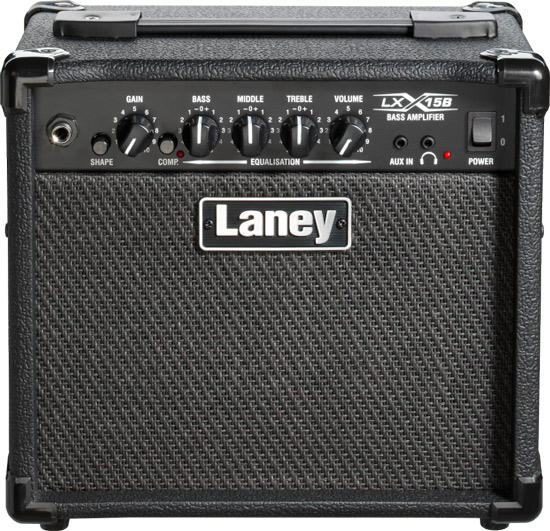
Pictured: The Laney LX15B bass amp is a compact, plug and play practice amplifier designed specifically for bass guitar. It’s packed with 15 watts, making it one of the best bass amps for beginner bass players and home practice thanks to a headphones in!
Remember: types of bass amps, performance needs, power, and portability are cornerstones of choosing the best bass amp for your needs. Get out there and play as many as you ca, start experimenting with different options of bass guitar amps and figure put what’s best for you, whether its a bass combo amp, a head and stack or a pedal board bass amp.
View a full range of Laney Bass amplification and bass amps today. Shopping from the USA? Keep checking the Laney site for the best bass amp deals and buy direct from us!
Solid-state bass amps are not inherently better, but they offer advantages like reliability as there ar eno tubes to break, consistent sound, and lighter weight.
Whether solid-state amps sound better than tube amps is subjective. Solid-state amps provide a cleaner sound at higher volumes while tube amps offer a warmer, more organic tone, but you need to crank them to get that tube break up sound unless you have amaster volume and gain switch. It really depends on what you want your amp to sound like.
Yes, lots bass players, both professional and hobby players use tube bass amps. They are favoured for their warm, rich tonal quality and natural overdrive, particularly in genres like blues, and classic rock where a fuller, more resonant bass sound is desired.